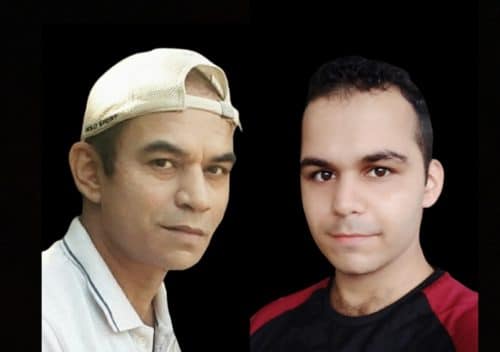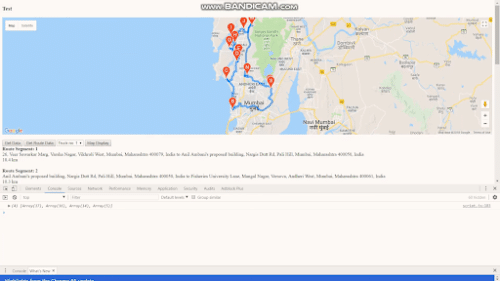It was a hobby that became a passion while attempting to bring down combinatorial sets from exponential highs to bounds that could be minimal. In the end, what came out was magical! Neural Heights is a young startup that is proving that our connected world can be made even smaller using its proprietary Basis Function of Linear Algebra. In an interview with EFY, the founders of Neural Heights share their insights.

Q. What is combinatorial explosion and how is it connected to route optimization?
TC: You would think that exponential growth is the fastest growth that exists, but it’s not. Combinatorial explosion is a mathematical phenomenon that occurs when a system’s variables or nodes are all connected to one another and a number of possible combinations are created by them. A simple example would be the equation y = x! (factorial). It is not a desirable effect, especially in AI, and it takes years to solve. The phenomenon is exploited by casinos and lotteries.
“We, at Neural Heights, have created a new way of resolving Combinatorial Explosion”

Route planning and route optimization are complex problems and are largely dependent on inputs. As the inputs increase, complexities also rise and the local or global minima takes a beating due to such increase or rise. Similarly, in combinatorial explosion too, the ‘known’ bounds fail to satisfy the optimization needs.
In essence, route optimization is a combinatorial explosion complexity and needs to be addressed using the best possible layout framework (i.e. Physical & Logical Topology order and orientation) to mitigate the losses that earlier schemes could not fathom. So the link between these two seemingly different notions is strong; combinatorial explosion is applicable in route optimization too.
Q. What exactly is your product and how did you come up with an idea for developing it?
TC: I’ve served in the Indian Air Force for 20 years, and that’s where my technological awareness developed. I was responsible for handling state-of-the-art weaponry that included laser-guided bombs and I have eight years of experience deploying them on different fighter aircraft fleets. Later, I was responsible for the development of the Basis Function, whose basic version was verified by an industry standard expert working at Qualcomm.
Working at IAF, we didn’t have much time to go deep into tech. Then I came across a problem statement with combinatorial explosion – it had a high exponential nature. Even if the world’s whole population starts solving it, it will take five years to solve it! The problem was: 80C20C10 that goes like – 80 picks 20 and then 20 picks 10 but from the 80 all the while. I started working on that in my free time. I happened to come across a framework that helped me solve this problem.
The problem’s curse of dimensionality was computationally extreme, yet I could develop a bound which is 39 iterations for 80, 9 iterations for 20 and 4 iterations for 10 but all under ONE basis. The same basis later became a NEW Basis Function when it was coded in a mathematical formula. This brought down the complexity of the problem such that it could be solved in just one day, with around ten to twenty days of preparation. That was my first big break in this arena. This is a method to finish the rough-working of algorithms and get to a fair-working straight away. Currently, there are two versions of the same Basis Function and a third one is also likely in the future. Combined, these are taking and will take computing prowess to newer heights.
AS: Our Basis Functions have risen to the level wherein, through simulations, we are prototyping various industry use cases – logistical company requirements, embedded systems, packet switching, label switching, and any other routing protocols. We are defining new benchmarks for networks – benchmarks that define the scope for industry, education, and our environment.
Q. Where did you first try out your algorithm?
TC: I’ve always been interested in the mathematical aspect of lotteries. Often, lottery organizers lure people, but keep most of the money themselves, because the common man does not understand the mathematical part of it – probability. So I tested it a few times. My first hit was a 70% match with the winning ticket number. The second was 80%.
Later, I approached Intel’s headquarters in the US. They guided me to reach out in India (Bangalore) and I met three professionals who told me that this could be written in C. This is handled by Ankur. Also, my basis function was then verified by an industry standards expert from Qualcomm over nine months. In December 2016, he told me that this was a new basis function of linear algebra; this was a new standard of regression. He advised me to meet with local computer science experts who would help me identify use cases and applications that could be presented to the market. I worked with a professor from an Engineering college in Jodhpur, who spent three months with me solving this problem. He told me that I’ve found a new method for multi-path routing and have surpassed the earlier methods.
This was our timeline:
- The first instance was in 2004
- Proved the fits in 2007
- Met Intel’s three-member team of Processor Design in 2012 at their Bangalore Headquarters
- Qualcomm Industry Standards Expert verified the basic version in 2015
- Developed the advanced version in 2016.
- Created the Routing and Computation Engine in 2016.
- Mapping Interface and Optimization Engine came in 2017
- Neural Heights was incorporated in April 2019
- Boeing India and Microsoft for Startups had taken keen interest by December 2019
- Ford Smart Mobility became interested in integrating our methods in May 2020, but just then Covid-19 restrictions halted every operation and our market entry was blocked
- But in these two years, we have found the fits in computational biology as well and validated our fits in processor architecture, embedded circuits and embedded design.
Q. What’s unique about your Basis Function?
TC: The dependencies of using previous methods have kept the users unaware of the miscalculations present, existing rough working, and the losses occurring due to them. In the application domains of Multi-Path Routing, we introduce a new fair working paradigm and even provide comparisons of the resultant outputs with mathematical proofs.
For example, for a node size of 10, other methods take 5 iterations, but mine takes only four. One cycle was reduced. This means that link pluralities have also been reduced and we are functioning faster. It solves all routing problems. In the electronics domain, in particular, it would be used in virtual circuit design by the planarity we derive.
“So instead of creating more circuit route options, we are basically creating less number of routes. That’ll make it easy for a circuit designer to select the optimum one in order to design the circuit. That’s what we’re targeting in terms of hardware”
Q. Could you elaborate on a few applications of your Basis Function?
TC: Our Basis Function has connections in electronics – like new Logical Topology or Virtual Circuit design feature based on Graph Theory to enhance system throughput. It can reduce the embedded circuit design complexities and can improve the processing speeds. In IoT, the application is in cloud and edge computing, where having a new faster travel method for storing large data packages is important. Again, the network throughput gets enhanced using our method.
We have more applications in the service sector, directly improving last-mile delivery, milk run, and fleet management, where our routing methods reduce travel distances and travel times and help drive down operational costs. It even reduces the manpower needed to effectively manage the decision support systems of an organization by providing the most intelligent digital brain. Even in computational biology, this solution could be used as a variant-detecting algorithm.
Overall, there are three application areas –
- Logistics and Routing
- Interconnection and Networking (CDN, packet switching, label switching, routing protocols like RIP, RIPng, IGRP, EIGRP)
- Processor Architecture and Circuit Design
AS: Let me explain the applications in logistics in detail. As soon as the optimal object is ready, Neural Heights’ proprietary optimization engine starts delivering individual TSPs (Traveling Salesman Problem). These include the number of vehicles in use, volumes, and specific routes they take within the allotted time windows, having pre-decided driving speeds and halt durations at each pickup or delivery point with enabled geocoding. Since the Neural Heights’ basis function has broken conventions, it is able to break market entry barriers and also generate interest because the creation is in deep learning, but with no model replication.
In short, the algorithm is used to compute the most optimal routes with
- Volume Optimization
- Vehicle Count
- Time Windows
- Pickup/Deliveries combined
- Shift Management
- Vehicle Speed
- Addresses with GeoCoding

Q. What are you currently working on in terms of tech and business development?
TC: In terms of technology, a new development that can happen is logistical mapping. Today, everybody uses logistical mapping. The mapping is usually done via Google Maps or other APIs. These methods have certain inefficiencies. Our method is about 98% accurate. With deep learning, we achieved 100% accuracy. Hence, we have received keen interest as our routing methods are entirely new and have surpassed Google Maps APIs for location optimization.
“We are planning to establish a CoE (Centre of Excellence) either via public funds or via government support.”
India is at the consumer end for a lot of things and technologies. Since our end product, as a tech solution, is a big game-changer, we hold the vision to bring this capacity into effect for making India a producer in the same domains. To achieve this objective, Neural Heights is in discussions with the Central Govt. and State Govt. of Himachal to help commission a Centre-of-Excellence for developing the next level of solutions using the proprietary technology we own. We are open to discussing and collaborating with private sector entities willing to develop the needed infrastructure jointly with us. The initial phase of this particular vision has already been initiated and a few inroads have also been made. We are currently bootstrapped and are looking for strategic partnerships with relevant stakeholders in the applicable domains, instead of sharing equity with an investor.
Q. How has the Covid19 pandemic affected your company and operations?
AS: We were about to launch our services in mobility with Ford Smart Mobility just before the onset of the pandemic. We had gotten the approval and connected through Nasscom via an event. They took interest in our solutions. We are actually market-ready in logistics. We have 3 developments in logistics – a routing cum computation engine, a mapping interface, and an optimization interface. We had also gotten interest from Boeing and were about to initiate discussions for development in Bangalore.
But the pandemic restrictions halted all operations and we had to pivot. That’s when we started looking at the computational biology side of things. The pandemic brought forth an entirely new domain. Things are getting better now and we are back on track. We have again garnered interest and are moving through various ministries at the moment.
Q. What are your hiring trends?
AS: We look for creativity, a problem-solving attitude, and adaptability. As far as technical knowledge is concerned, the know-how of graph theory and mathematics is a must. Apart from that, we plan to hire computer engineers to get things up and running, and handle networking, and network administration. We are looking for people who are interested in working on something new.







